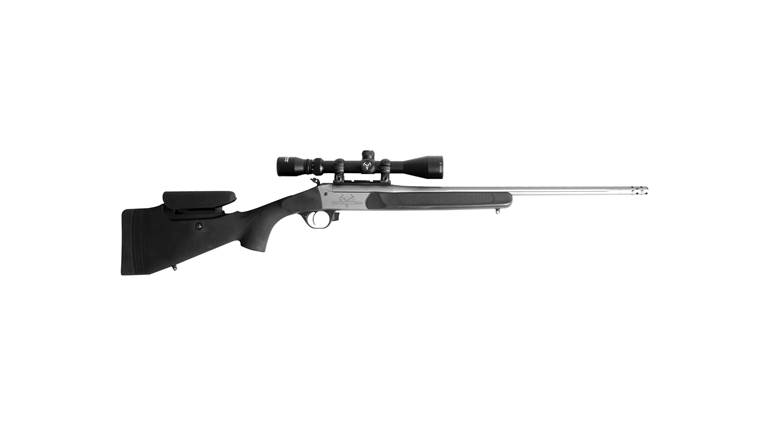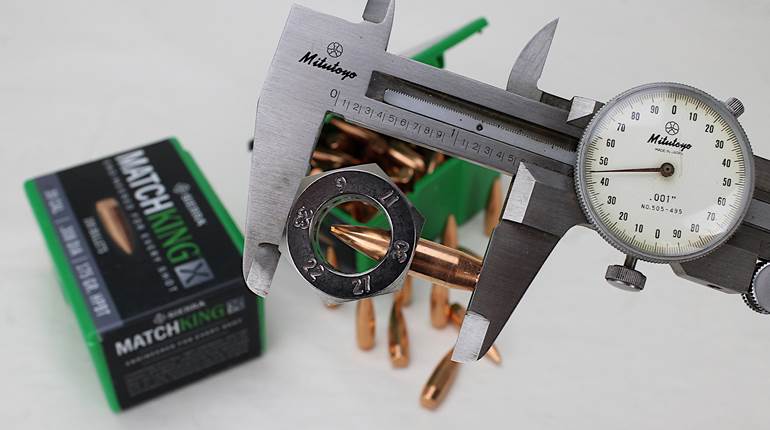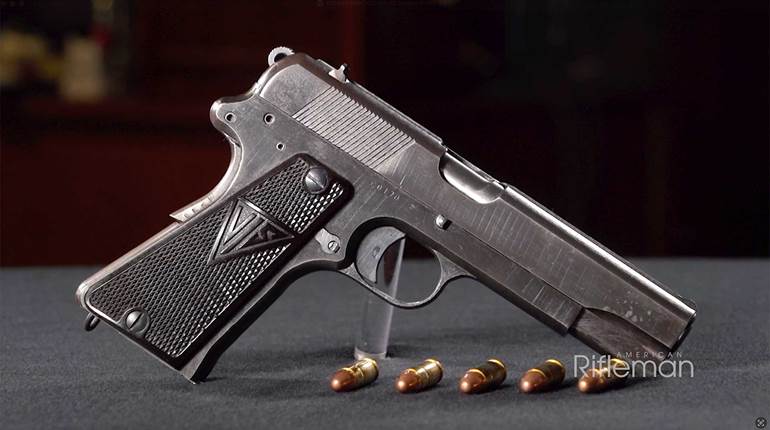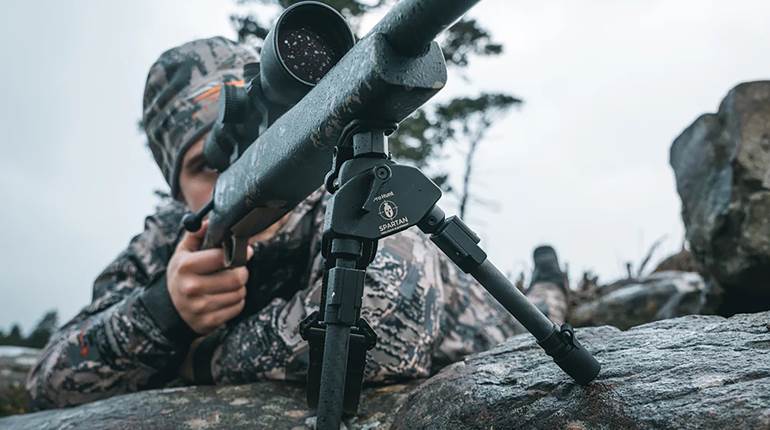
Night-vision devices (NVDs) were once priced well beyond the pocketbook of the everyman, which relegated them to military/law enforcement use and the rich person’s playthings, but that is fortunately no longer the case. While bleeding-edge third-generation optics can still run into the five-digit price range, highly capable options are now available on the civilian market for essentially the same amount as a good-quality conventional scope—and can be packed into a smaller package weighing even less.
The Wraith 4K Mini from Sightmark is a prime example: Despite offering digital night-vision capabilities comparable with Gen 2+ military NVDs, the optic (without its removable rubber eyecup) measures just 5.88" long and weighs only 21 ozs. including its Picatinny rail mount, and has an MSRP of less than $800. Two versions of the 4K Mini that share the same external dimensions are offered, a 2-16X 32 mm model and a 4-32X 32 mm version, and for this evaluation, we took a closer look at the latter.
In a similar fashion to other digital NVDs, the Sightmark works by collecting light particles through its 32 mm objective lens, with an onboard 4K (3840x2160 pixel) CMOS image sensor converting them into an electrical signal that is sent to the display—in this case a 1280x720 pixel FLCOS screen. The use of a CMOS sensor instead of a CCD sensor allows the 4K Mini’s price to be kept reasonable while also allowing for smaller circuitry that draws less power.
Despite its compact size, the 4K Mini provides a lot of functionality. As a digital NVD, the optic is capable of around-the-clock operation; it offers both full-color day and black-and-white night modes, and the user can switch between these settings with a simple button press. A third “night custom” mode allows for settings that are automatically applied in the standard night mode to be customized to the shooter’s preference. The 4K Mini has nine magnification settings: When powered on, the unit always defaults to 4X, but its display can then be cycled through 6X, 8X, 12X, 16X, 20X, 24X, 28X and 32X zooms. There is a learning curve when operating most night-vision or thermal optics, and while that is indeed the case with the 4K Mini, once learned, its user interface is simple to use—even in no-light conditions.
Clarity through the Wraith is superb: It really isn’t until about 20X that the daytime image starts to get at all grainy, and, at night, we found it capable of rendering animals, trees and buildings in a level of detail once thought impossible of an NVD in this price range. The 4K Mini operates at 60 Hz (its display repaints the image 60 times per second) in day mode, while night mode runs at 30 frames per second—although this can be adjusted in night custom mode. A throw lever near the objective lens allows the optic to be focused on targets from as close to the shooter as 12 feet out to infinity. Both the Wraith and the included infrared illuminator run off a pair of lithium CR123 batteries, and the optic comes with four batteries to allow each element to be put to immediate use. A Picatinny rail mount comes with the 4K Mini for quick installation on a rifle, but the miniature Wraith can also be removed from this mount and used instead as a hand-held monocular.

The 4K Mini boasts a 300-yard nighttime detection range, although we did find that the infrared illuminator needed to be on the highest of its three brightness settings in order to get the most capability out of the NVD. Since it operates at the 850nm wavelength, the light’s LED does produce a slight red glow that is visible to the human eye and could conceivably spook an after-dark hunter’s prey. Due to the optic’s short length, it and the illuminator can fit comfortably together on most receiver-top rails without the need for extra Picatinny slots extending onto the handguard.
There are 14 reticle options (10 second-focal-plane and four first-focal-plane) in nine colors—ranging from fairly involved holdover systems in both m.o.a.- and mil-based graduations to a simple, uncluttered 2-m.o.a. dot. Both the reticle and its color scheme can be changed in only seconds by accessing the menu. The 4K Mini can store up to five firearm/load profiles within its memory, allowing the optic to be shared between a handful of rifles and still be put to quick use once mounted, as each profile saves both that gun’s zero and its reticle choices.
Throughout testing, our Wraith was used atop both a .223 Rem.-chambered Springfield Saint and a .40 S&W-chambered Beretta Cx4 Storm—with a profile set up for each—and the zeros did, in fact, follow each gun across numerous re-installations relatively well. If the same rail slot was used each time, the point of impact (POI) was generally still within 2" of the point of aim (POA) at 100 yards, although a re-zero would still be prudent for applications other than plinking. Fortunately, the 4K Mini features an easy-to-use zeroing system that allows the POI to be quickly brought to the POA after firing just one small group or even a single shot. While keeping the crosshair on the POA, the arrow buttons on the top of the optic’s aluminum housing are used to move a red adjustment reticle in the display to the location of the impacts; once done, pressing the center control button saves the new zero.
The optic also features a stadiametric rangefinding function that will provide an estimated distance to the target (deer, hog, coyote and custom settings are programmed) once it has been bracketed by the system’s measuring lines. For shooters or hunters interested in preserving their experiences, the 4K Mini is capable of taking both still images (of the .jpg format) and videos with audio (.avi) and saving them to an installable micro-SD memory card (not included).
Since the Wraith’s reticle is a digital construct and not a physical etching, we felt the need to validate whether it had been correctly programmed by Sightmark’s engineers at various magnification levels. Using one of the m.o.a.-based FFP options, we first fired a three-shot, 100-yard group using the center crosshair as the aiming point, with the optic set on 4X. The 4K Mini was then dialed up to 12X and another group was fired—this time using the 6-m.o.a. hold-over line as our aiming point. We followed that by cranking the scope all the way up to 32X and firing a third group instead using the left-side 4-m.o.a. windage hash as the aiming point. Measuring how far apart the resulting groups were from each other confirmed that the reticle was properly regulated at all three zoom settings.
The water-resistant and shock-proof Sightmark Wraith 4K Mini is proof that an effective, handy night-vision optic no longer needs to be prohibitively expensive. And, the argument could be made that digital NVDs of this type—which can be used 24 hours a day—are an even better value than a conventional riflescope at the same price point that is essentially useless half of the time. Our testing found that the 4K Mini was a real performer both before and after the sun went down, which makes it a solid, economical optic choice for a myriad of applications. 





































